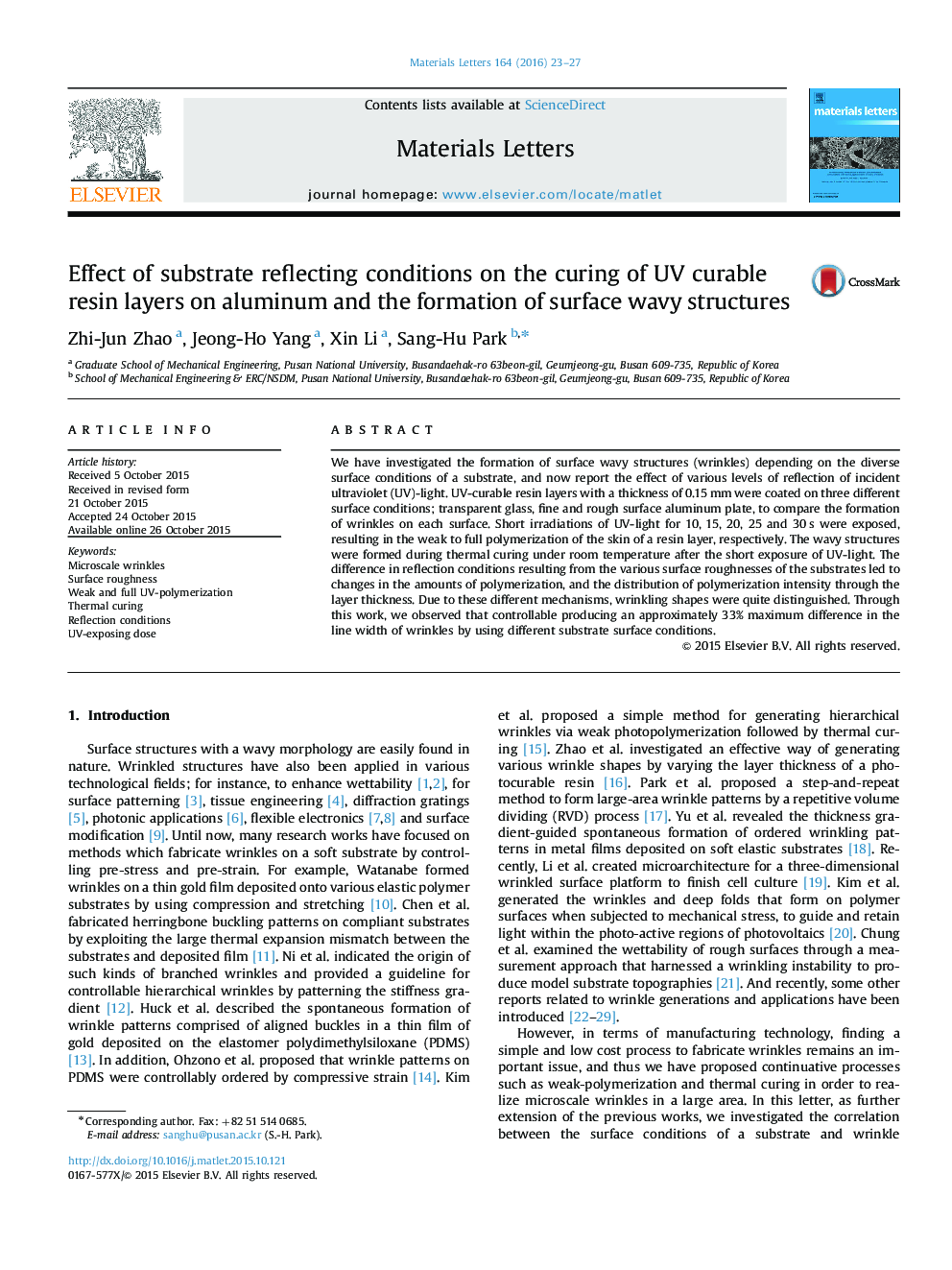| Article ID | Journal | Published Year | Pages | File Type |
|---|---|---|---|---|
| 1641859 | Materials Letters | 2016 | 5 Pages |
•The effect of a substrate reflection condition was investigated for diverse generation of surface wrinkles.•It was studied that the fundamental mechanism on formation of wrinkles by weak-polymerization and thermal curing process.•Irregular line-shapes of wrinkles with a range of 62–92 μm in line width were fabricated by using the effect of substrate reflection conditions.•Contact angle was varied depending on wrinkle shapes from 63° to 76°.
We have investigated the formation of surface wavy structures (wrinkles) depending on the diverse surface conditions of a substrate, and now report the effect of various levels of reflection of incident ultraviolet (UV)-light. UV-curable resin layers with a thickness of 0.15 mm were coated on three different surface conditions; transparent glass, fine and rough surface aluminum plate, to compare the formation of wrinkles on each surface. Short irradiations of UV-light for 10, 15, 20, 25 and 30 s were exposed, resulting in the weak to full polymerization of the skin of a resin layer, respectively. The wavy structures were formed during thermal curing under room temperature after the short exposure of UV-light. The difference in reflection conditions resulting from the various surface roughnesses of the substrates led to changes in the amounts of polymerization, and the distribution of polymerization intensity through the layer thickness. Due to these different mechanisms, wrinkling shapes were quite distinguished. Through this work, we observed that controllable producing an approximately 33% maximum difference in the line width of wrinkles by using different substrate surface conditions.
